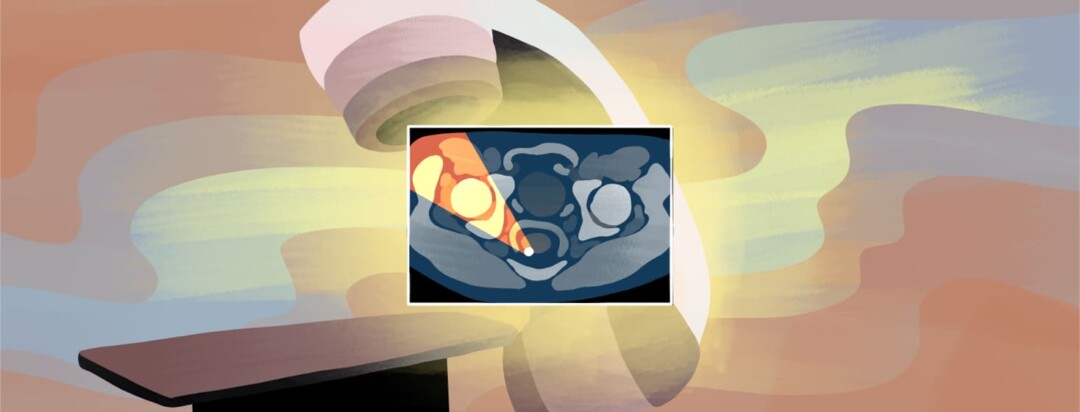My Radiotherapy Story
Radiotherapy is a common treatment for prostate cancer. It uses high doses of radiation to target and kill cancer cells. Perhaps you are about to undertake radiation therapy and would like a little inside track on what’s involved.
Not long ago I endured 38 radiotherapy sessions over an eight-week period. I’m not a doctor and have no medical expertise, but here’s my story.
Mapping my prostate to target the cancer
Before the therapy starts, the doctors needed to map my prostate to target the cancer accurately. This is achieved using a CT scanner. My bowels needed to be empty and my bladder full of water. A cannula was jabbed in my arm and dye filtered into my blood stream, which makes the prostate and lymph nodes highly visible. If all is well, the scan can take just a few minutes.
During a simulation session, I was positioned on a treatment table in the same way as during actual treatments. This helps ensure accurate delivery of radiation. Small markers, tattoo crosses, were inked on to my body. Two on my hips and one just below my navel. All to make sure that for each session I’m lying in the exact same position.
Featured Forum
View all responsesA similar course for each radiation treatment
All my actual radiation treatments followed a similar course. My bowels had to be empty, and to make sure this was the case I generally self-administered an enema at home prior to heading to the hospital. Once there I drank 350 ml of water and usually waited around 45 minutes before being called in.
I lay down on a blue mat on the tray that slides me into the machine. The technicians pull me into the right position using the tattoo crosses.
In I go and initially I’m scanned to make sure my bowels are sufficiently empty and my bladder full. Keeping as still as I can with my hands folded across my chest, I wait for the treatment to be completed, which takes around 12 minutes. The room is quite cold, and the machine quiet, though there is a kind of high-frequency rushing sound, which is not unpleasant. The treatment caused no pain for me, and if you wish you can listen to music.
Drinking lots of water
Water is an important part of this treatment. During the day, patients may be advised to drink a lot of water, potentially between two and three liters. This is to help maintain the position of the prostate to make the radiation therapy more accurate (and also lower the chances of side effects from the treatment).1
I was told at the outset that about a month into the treatment, I might start to feel very tired. I soon found out why, as I was getting up to pee about four times a night and not sleeping well.
Unfortunately during the latter stages of my treatment, I found retaining the 350ml of water something of a challenge. On several occasions I almost had to stop the session being so desperate to pee. In the end I made it through, though sometimes I had to make a mad dash to the bathroom when the treatment was completed.
Radiotherapy wasn't bad for me
Radiotherapy wasn't so bad for me, though of course everyone’s experience may differ. One of the guys I used to meet every morning found it difficult, as he was trudging to the bathroom every hour at night and was exhausted.
After completing my eight-week program, my tiredness decreased, and I scheduled regular follow-up appointments with my oncologist to monitor my progress and to assess any remaining side effects.
Good luck with your treatment!

Join the conversation